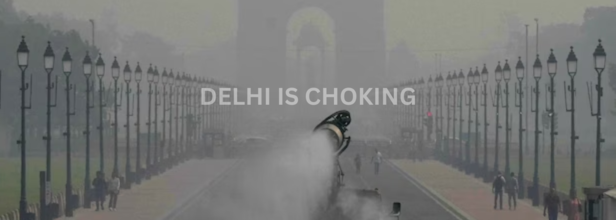
Credits: PTI
Delhi Smog And Pollution Remains A Health Concerns For Delhiites
As per a study by the Centre for Science and Environment, the time period of October 12 to November 3, 2024, vehicular emissions were the largest contributor to Delhi's air pollution. This accounted for 51.5% of the city's pollution. Neighbouring region also adds up to 34.97%, whereas farm fires contribute to 8.19% and dust particles makeup 3.7% of the total air pollution in the city.
As of 10am today, Delhi's AQI stands in the "severe" category. Anand Vihar at 457, Chandni Chowk at 388, Lodhi Road at 375, Jahangirpuri at 465, whereas in the NCR region, Ghaziabad is at 425, Noida Sector 1 at 268 and Gurugram Sector 51 at 281.
The air quality has worsened to a level that the World Health Organisation is calling it hazardous. For those who live in Delhi, it is no longer only an environmental crisis, but a public health emergency. A recent study also reveals that India loses more than a million lives annually due to air pollution alone.
Public Health Emergency
There are many short-term and long-term impact on public health from the constant exposure of air pollution. As per IQAir, in the short-term, people experience irritation in eyes, throat, and nose, along with irregular heartbeats, asthma attacks, coughing, chest tightness, and difficulty breathing.
Prolonged exposure also intensifies these risks and leads to long-term effects such as chronic respiratory illnesses like bronchitis, asthma, and emphysema. Pollutants can also damage lung tissue, increasing the likelihood of lung cancer. Air pollution also leads to an increased risk of heart attacks and strokes and could also be linked to premature death.
Why is Delhi more polluted in winter?
Although vehicular emissions remain the same throughout the year, the pollution worsens in Delhi-NCR during the winter months. The reason is because cold air forms near the ground and traps pollutants, preventing it from dispersing. Low wind speeds also reduce the dispersion of pollutants.
Furthermore, this is also the season of festivals, weddings where firecrackers are burned and it is also the time when crop residue from nearby states are burnt. The smoke from these activities, combined with the wind pattern, contributes to Delhi's air pollution.
What the government is doing to curb pollution?
Stage-III of the Graded Response Action Plan (GRAP) has been imposed in Delhi from November 15. This is triggered when the pollution reaches "severe" category. As the part of this measure, a ban on construction, demolition activities are enforced. Students are asked to continue schooling through virtual mode, especially those who are enrolled who are enrolled up to Class 5, as they are the most vulnerable to health risks.
It has also imposed ban on vehicles which run on BS-III petrol and BS-IV diesel. The ban is enforced on NCR too and will be applied in Gurugram, Faridabad, Ghaziabad, Gautum Bugh Nagar, and Noida. The ban also includes inter-state buses, except those than are electric, run on CNG, or BS-VI diesel.
© 2024 Bennett, Coleman & Company Limited

